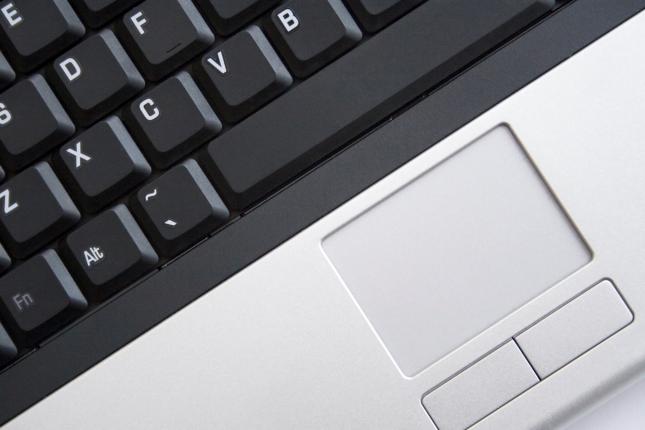
The keyboard of laptops works slightly differently than a normal keyboard. Make optimal use of all possibilities.
Introduction
Those who work on a laptop usually use the keyboard that is inside and a touchpad to control the mouse pointer. Connecting a separate keyboard and mouse is of course also possible. There are many different laptops in circulation. While the keyboards also all look different, they have something in common: the keys are flat, are close together, and some keys have multiple functions. In this article, we’ll look at common tricks to get the most out of the laptop’s keyboard. Your keyboard will probably look slightly different from the images accompanying this article, but the tips are easy to implement on most laptop keyboards.
Parts of the keyboard
On an average laptop keyboard are of course the letters and numbers. To the right of it can be the numeric keys (marked in red in our image). The top row of keys usually consists of the function keys F1 through F12, system keys (marked red), and sometimes the power button.

Multi-function keys
Only a limited number of keys fit on laptop keyboards. Therefore, some keys have multiple functions. Above the numbers are, among other things, the at sign and the percent sign, just like on a normal keyboard. You activate it by pressing the shift key and while holding it down, pressing the appropriate number. If you do this at the 2, the @ will appear.
On laptop keyboards, there are additional images next to the function keys. They are not above but below the name of the test. Which pictures are there, differs per keyboard. Often there is the symbol of the Wi-Fi connection. Enables or disables Wi-Fi (see below). There is also often the symbol of two screens next to each other, a black screen and a white one. These keys are, for example, intended to get the image of the laptop on the television when you connect the laptop to the TV.
With the key [Fn] activate the additional functions. The button works just like the At Tail Shift button. Busy [Fn] and then the appropriate function key. The test [Fn] works with all keys where there are extra options below or to the right of the normal designations. On the keyboard from the image above, the sound can be made louder and softer with the key [Fn] and the arrow keys below the right Shift key.
Adjust screen brightness
Laptops are perfectly suited for use on the road or outdoors. It may be necessary to adjust the brightness of the display. The screen usually needs to be bright in a dark environment, and a lower brightness often works better in full light. Adjust the brightness with the Fn key. Hold down the Fn key and press the largest sun/star under one of the function keys or under any of the other keys. The smaller sun/star makes the screen darker.
Enable or disable Wi-Fi
On laptops with a WiFi receiver, the WiFi can be turned on and off with keys on the keyboard. Below one of the keys is the image of an antenna or WiFi signal. By combining with the [Fn]key Pressing this key toggles the wireless network card on or off. For example, switch off the WiFi to save the laptop battery, if you use the internet with a cable or if you are on an airplane.
Note: if you turn off the WiFi, your wireless internet connection will be cut. Turning on Wi-Fi doesn’t automatically mean you have internet: you need to connect to a network. When you are at home, the laptop usually connects to your home network. If you are sitting on a terrace, you should check whether a (free) WiFi connection is available and connect to it. Be careful with WiFi outside the door, though. Read more about this in our article ‘Safe internet on the go’.
Using touch pad
Almost all laptops have a touchpad: a rectangular part with which you operate the mouse pointer. This is done by swiping the fingertip over the touchpad. Often there are two buttons below the touchpad: the left mouse button and the right mouse button. But sometimes the left part of the touchpad just acts as a left mouse button and the right part as a right mouse button. Using a touchpad takes some getting used to at first. If you find it uncomfortable, connect a mouse to the laptop via one of the USB ports (if available).

Troubleshooting the keyboard
Two common computer problems are solved with the keyboard. The first is when the wrong punctuation marks suddenly appear while typing. Unnoticed you have changed the keyboard settings. Fix this by holding down the Ctrl key and then pressing the Shift key. The keyboard settings are set correctly again.
The second problem is if the image on the screen is suddenly upside down. Press and hold the Ctrl and Alt keys both and press the up arrow key on the right side of the keyboard. The image rotates back to the correct display.